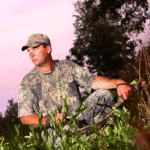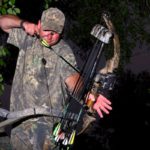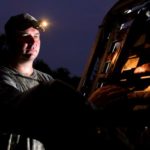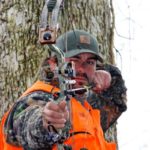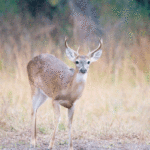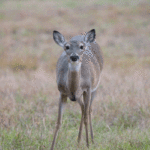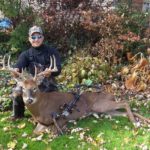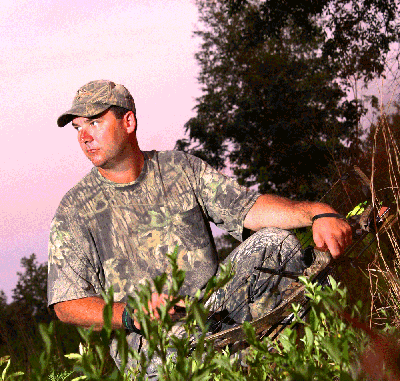
If you want a successful bow hunt on Oct. 1, keep the promises you’re making to yourself right now.
Bowhunters spend all summer promising themselves that things are going to be different this year.
We promise that we’re going to shoot our bows, but we don’t.
We promise we’re going to cut shooting lanes, but we don’t.
We promise we’re going to hang our stands early, but we don’t.
The next thing we know, our promises have built to the point that they break, and we make a mad dash to get things ready the last week of September.
At least that’s how the unsuccessful bowhunters like me do it.
Those that strap deer on their four-wheelers some time around 9 a.m. or so on the morning of Oct. 1?
They are the promise keepers.
Take Curtis Simpson, for example.
This avid bowhunter from West Monroe learned a long time ago that the best way to come home without a deer on the opening day of bow season was to wait until the last minute to prepare.
He knows the importance of shooting practice, but he is especially persnickety about having his opening-day bow stand in place and ready to hunt no later than the end of August.
“Four weeks is enough time to get in and get out, and let your stand site cool down,” Simpson said. “Go in there too late and you risk blowing the whole place out. Instead of hanging stands in September, you should be shooting your bow — practicing and getting ready rather than figuring out where you’re going to hunt.”
Simpson cited several reasons for why bowhunters should scout for a stand location as early in August as possible, but he told the story of a deer that he killed a couple of years ago to point out what can happen when a hunter gives a new stand time to rest.
He was hunting a particular deer that he just couldn’t get on, so he quit trying. Around Christmas of that same season, he finally figured out where the deer was coming through the woods.
Rather than hanging a stand right then and hunting that deer, he mentally marked it.
“I went back to that same spot the very next August and put a stand up,” Simpson recalled. “I trimmed a couple of shooting lanes and got out.”
Simpson didn’t go back to that stand on Oct. 1. In fact, as bad as he wanted to, he didn’t go back to that stand until he knew the time was right.
“The morning of Nov. 21 was the first time I went back to it since I hung it back that August,” Simpson said. “I knew he was close because I started seeing scrapes and rubs on my way in.”
Simpson hit his little bleat can three times and put it in his pocket. A 128-inch 9-point buck ran in and stopped 10 yards from Simpson’s stand, which is right where Simpson shot him.
It may not happen like this on Oct. 1, especially if the rut isn’t in full swing where you hunt, but the fact that Simpson’s buck had no reason to be leery should be all the reason you need to get out in the woods right now to prepare a bow stand that you won’t sit in for at least four weeks.
Obviously, the No. 1 reason to get your bow stand work finished during August is to give your scent time to diminish where you plan to hunt.
“You’re going to leave a lot more scent in the woods during September because of how hot the weather still is,” Simpson explained. “And the more you go in trying to fine tune your stand the more scent you’re going to leave behind.”
Do that in September, and there’s no way a cagey buck is going to come waltzing right under you early on Oct. 1. Even mature does are going to be more on-guard and ready to bolt at the first sign of something that’s just not quite right.
Other than not wanting his scent to linger around his bow stand, Simpson has another less obvious reason for wanting to leave his stand site alone during September. But it has more to do with what other people are doing than what he does.
“One thing about where I hunt is that I have a hunting club right beside me,” Simpson said. “Deer know when human activity picks up, and they can sense something is up.
“I get in and out in August, and (his deer-camp neighbors) go out and run around trying to get ready in September. They’re liable to spook deer on top of me, as long as I’m not going in there messing around. I like to let people push deer to me rather than risk pushing deer to them.”
As for deer that call his property home, Simpson definitely doesn’t want to force them to go through any culture shock right before the beginning of bow season. That’s why he does whatever limb trimming he needs to do when he hangs his stand rather than waiting until the last minute.
“I don’t want anything standing out on Oct. 1 that is different than what they’re used to looking at,” Simpson said. “Any time you go in there cutting shooting lanes, deer are going to be wise to the differences in their surroundings.”
Because of that, Simpson tries to keep from cutting shooting lanes that are too obvious. Rather, he looks to cut one limb here and one twig there. The fewer limbs he has to cut the better he’s going to be able to keep his surroundings looking natural.
“You definitely don’t want to cut a whole lot all at one time,” he explained. “I like to get in my stand and see natural holes that I can already shoot through, and then trim from there, if necessary. With does, you might get by cutting a lot of stuff, but bucks consider it a red flag, for sure.”
And one more thing that Simpson refuses to do when setting up his bow hunting stands during August is put them anywhere near where he plans to hunt during the rut.
“I back off my main stuff and try to shoot some does during the early bow season,” Simpson said. “I generally have different stands for different seasons, and my earliest bow stands are mainly set up over a little corn.”
Since Simpson hunts stuff in October that he wouldn’t consider hunting during December, he usually kills a doe the first or second time he hunts his bow stand, and any bucks that happen to wonder in are considered a bonus.
While he keeps in mind potential stand sites from being in the woods the previous season, Simpson typically tries to locate his bow stands on trails leading from bedding areas to food sources.
If most of his food plots are burned up from the summer heat and drought, Simpson starts looking for trails coming out of the edges of clear-cuts that lead into hardwoods.
“One thing I like to do is kind of predict which acorn trees deer might feed under during October by looking for the ones that are being worked over by squirrels,” Simpson said. “Other than that, it’s pretty wide open, as far as what the deer eat from August through October. It might be honeysuckle on the edge of a clear-cut, or it might be green briars right in the middle of it.”
But if a particular tree has been on his mind since last December or January, Simpson will go back to it to see what it looks like covered with green leaves, as opposed to being barren during the winter.
“I’ve got one in (stand site) mind right now,” Simpson said in late June. “I picked it out last season. Now all I’ve got to do is get in there and get my stand up. No doubt I’m going to take care of that in August.”
And that is a promise Simpson plans on keeping.
